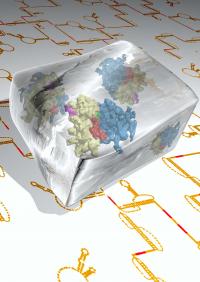|
From rxpgnews.com Infectious Diseases
UK scientists have cracked one of the key biological processes used by viruses such as HIV and SARS when they replicate according to a paper published in the journal Nature on 11 May. Viruses are able to interfere with the host cell processes that our bodies use to replicate cells, and protein synthesis is often one of their targets. For the first time, researchers at the Universities of Cambridge and Oxford have witnessed virus-induced "frameshifting" in action and have been able to identify the crucial role of particular elements.
Dr Ian Brierley, the project leader at the University of Cambridge, said: "This collaborative project was set up with Dr Robert Gilbert's team in Oxford to investigate the structure of a frameshifting ribosome using electron microscopy. The images we obtained give us an insight into how a virus-encoded RNA pseudoknot can induce frameshifting and may be useful in designing new ways to combat virus pathogens that use this process." Professor Julia Goodfellow, Chief Executive of the Biotechnology and Biological Sciences Research Council, which was one of the main funders, said: "This is exciting and valuable research and demonstrates clearly why investment in fundamental science is so important. The treatments and therapies that we now take for granted are based on decades of work by scientists furthering our understanding of natural processes. The work to explore fundamental biology today is laying the foundation for potential medical applications over the next twenty years." All rights reserved by www.rxpgnews.com |
